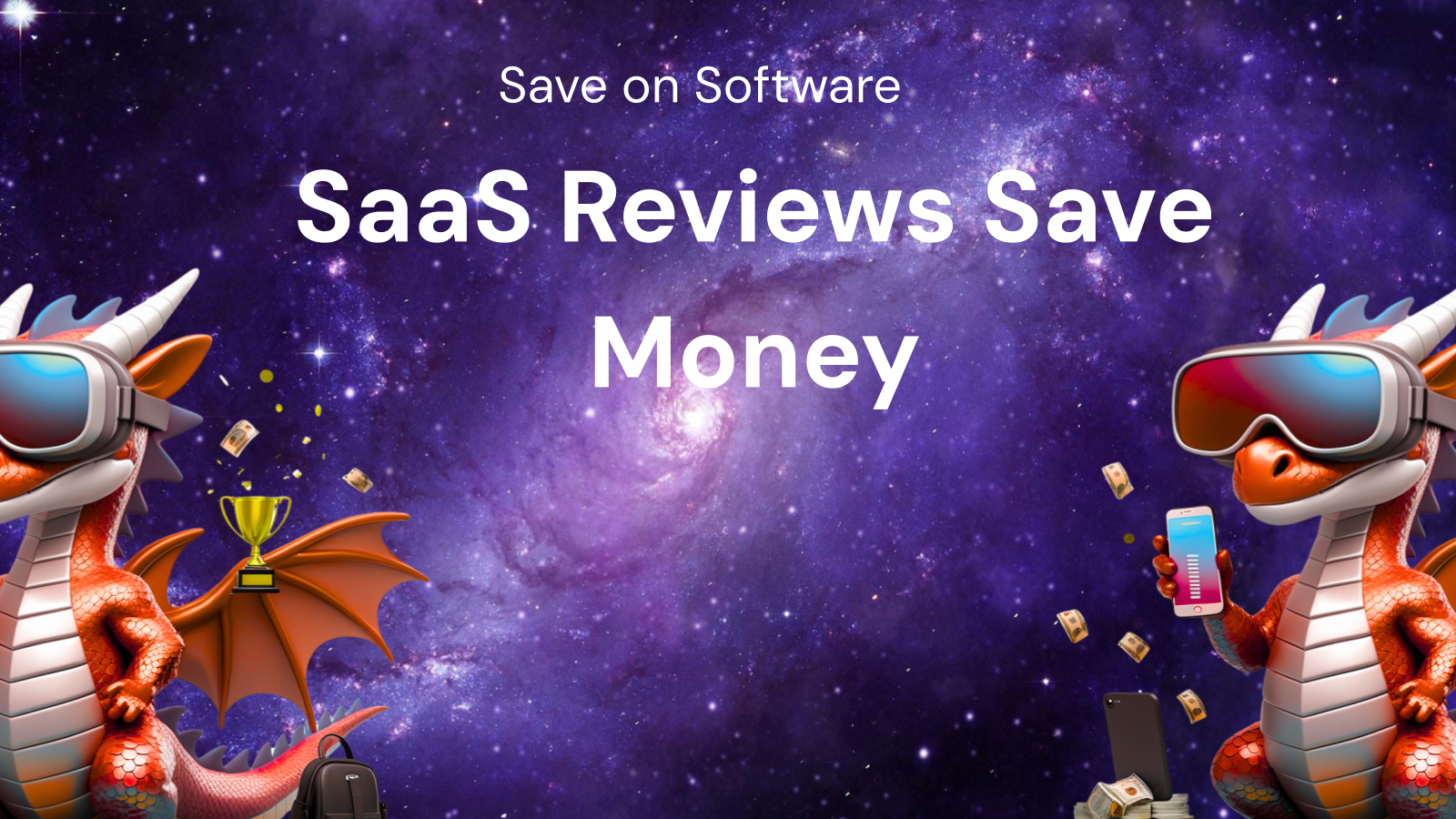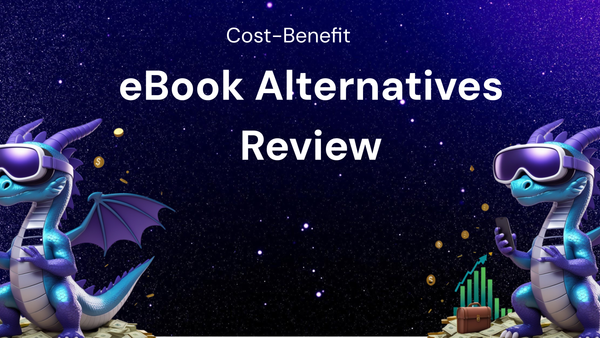How to Use SaaS Reviews to Save Money on Software

How to Use SaaS Reviews to Save Money on Software
In today's digital landscape, Software as a Service (SaaS) has become the lifeblood of countless businesses, from startups to multinational corporations. SaaS solutions offer flexibility, scalability, and often lower upfront costs compared to traditional on-premise software. However, the sheer volume of SaaS options available can be overwhelming, making it challenging to identify the best fit for your specific needs and budget. Blindly subscribing to a SaaS platform without proper research can lead to wasted money, inefficient workflows, and ultimately, a negative impact on your bottom line.
Fortunately, a powerful resource is readily available to help you navigate the complex world of SaaS: SaaS reviews. These reviews, written by real users with firsthand experience, provide invaluable insights into the strengths and weaknesses of different software options, allowing you to make informed decisions and ultimately, save money on software. This comprehensive guide will explore how to effectively utilize SaaS reviews to optimize your software spending and maximize your return on investment.
I. Understanding the Power of SaaS Reviews:
SaaS reviews are more than just opinions; they are a collective voice of users sharing their experiences with different software platforms. They offer a window into the real-world performance, usability, and support quality of a SaaS product, going beyond the marketing hype and sales pitches. Here's why SaaS reviews are crucial for saving money:
- Uncovering Hidden Costs: SaaS pricing models can be complex, with hidden fees for features, integrations, or usage overages. Reviews often reveal these hidden costs that might not be immediately apparent on the vendor's website. Users often share their experiences with unexpected charges, giving you a heads-up to ask the right questions during the sales process and negotiate better terms.
- Identifying Feature Overlap and Redundancy: Many organizations end up paying for multiple SaaS solutions with overlapping functionalities. By reading reviews, you can identify the core features users actually value and compare them across different platforms. This helps you consolidate your software stack and eliminate redundant subscriptions.
- Assessing Usability and Implementation Costs: A feature-rich SaaS platform is useless if your team struggles to use it effectively. Reviews often highlight the user-friendliness of a software, the ease of implementation, and the quality of training resources. A user-friendly solution minimizes the learning curve and reduces the need for expensive training and support, saving you time and money in the long run. Furthermore, negative reviews about complex implementation processes can alert you to potential integration challenges and unforeseen costs.
- Evaluating Customer Support Quality: Reliable customer support is crucial for resolving issues and maximizing the value of your SaaS investment. Reviews often provide insights into the responsiveness, helpfulness, and expertise of the vendor's support team. Poor customer support can lead to frustration, downtime, and ultimately, a loss of productivity. Positive reviews about exceptional customer support can be a strong indicator of a vendor's commitment to user satisfaction and long-term success.
- Discovering Alternative Solutions: Reviews can expose you to alternative SaaS solutions that you might not have considered otherwise. Users often mention comparable products they have used or alternatives that offer similar functionality at a lower price point. This can help you broaden your search and find a more cost-effective solution that meets your specific requirements.
- Gauging Long-Term Value and Scalability: SaaS is a long-term investment, and you need to choose a solution that can scale with your business. Reviews can provide insights into the platform's stability, performance under heavy load, and ability to adapt to evolving business needs. Users often share their experiences with the platform's scalability, helping you determine if it's a viable solution for the long haul.
II. Where to Find Reliable SaaS Reviews:
The internet is flooded with review websites, but not all of them are created equal. It's crucial to choose reputable platforms that prioritize authentic reviews and offer robust filtering and comparison tools. Here are some of the most reliable sources for SaaS reviews:
- G2: G2 is a leading platform for business software reviews. It features a comprehensive database of SaaS products across various categories, along with detailed reviews, ratings, and comparisons. G2 uses a proprietary algorithm to verify the authenticity of reviews and prevent bias.
- Capterra: Capterra, owned by Gartner, is another popular platform for finding and comparing business software. It offers a user-friendly interface, a vast library of reviews, and detailed product information. Capterra also provides a free tool that helps you find the best software based on your specific needs.
- TrustRadius: TrustRadius focuses on providing in-depth, unbiased reviews from verified users. It requires reviewers to provide detailed information about their role, company size, and usage scenarios to ensure the authenticity and relevance of reviews.
- Software Advice: Software Advice, also owned by Gartner, offers expert advice and product comparisons to help businesses find the right software. It provides a personalized consultation service and a database of user reviews.
- PeerSpot: PeerSpot focuses on enterprise technology and offers peer reviews, product comparisons, and community discussions. It features reviews from experienced IT professionals and provides detailed technical insights.
- AlternativeTo: While not strictly a review site, AlternativeTo is a valuable resource for finding alternative SaaS solutions. Users can search for a specific product and find a list of similar tools with user recommendations.
- Reddit (Specific Subreddits): Subreddits related to specific industries or software categories can be a valuable source of honest opinions and recommendations. However, it's important to be cautious and verify the credibility of the reviewers.
III. A Strategic Approach to Reading SaaS Reviews:
Finding the right SaaS solution isn't just about reading reviews; it's about reading them strategically. Here's a step-by-step guide to effectively analyze SaaS reviews and extract valuable insights:
- Define Your Needs and Requirements: Before you start reading reviews, clearly define your business needs and requirements. What problems are you trying to solve? What features are essential? What is your budget? Creating a detailed list of requirements will help you focus your search and evaluate potential solutions more effectively. Consider factors such as:
- Team Size and Structure: How many users will need access to the software? What are their technical skills?
- Specific Features Required: Identify the must-have features and the nice-to-have features.
- Integration Requirements: Will the software need to integrate with other systems?
- Budget Constraints: Determine your maximum budget for the software, including implementation and ongoing costs.
- Scalability Needs: How will your software needs evolve over time?
- Identify Potential Solutions: Based on your requirements, create a shortlist of potential SaaS solutions. Use online search engines, industry publications, and recommendations from your network to identify relevant options.
- Focus on Verified Reviews: Prioritize reviews from verified users on reputable platforms like G2, Capterra, and TrustRadius. Look for reviews that provide detailed information about the reviewer's role, company size, and usage scenarios.
- Read a Wide Range of Reviews: Don't rely on just a few reviews. Read a wide range of reviews, both positive and negative, to get a balanced perspective. Pay attention to the trends and patterns that emerge from the reviews.
- Analyze the Positive Reviews: Identify the features and functionalities that users consistently praise. Do these features align with your specific requirements? How do users describe the benefits they have experienced?
- Pay Close Attention to the Negative Reviews: Negative reviews are often more valuable than positive reviews. They can reveal potential drawbacks, limitations, and hidden costs that might not be immediately apparent. Pay attention to the recurring themes in the negative reviews and consider whether these issues could impact your business. Look for specific complaints about:
- Usability: Is the software difficult to learn or use?
- Customer Support: Is the support team responsive and helpful?
- Bugs and Glitches: Does the software have frequent bugs or performance issues?
- Pricing and Billing: Are there hidden fees or unexpected charges?
- Integration Issues: Does the software integrate seamlessly with other systems?
- Security Concerns: Are there any security vulnerabilities?
- Look for Reviews Addressing Your Specific Use Case: Not all reviews are equally relevant. Try to find reviews from users in similar industries or with similar business needs. These reviews will provide more specific insights into how the software performs in your particular context.
- Consider the Reviewer's Perspective: Keep in mind that reviews are subjective opinions. Consider the reviewer's perspective and biases. Are they technically savvy or novice users? What are their expectations for the software?
- Look for Responses from the Vendor: Many vendors actively monitor review platforms and respond to user feedback. Pay attention to the vendor's responses to negative reviews. Do they acknowledge the issues and offer solutions? This can be a good indicator of the vendor's commitment to customer satisfaction.
- Filter and Compare: Use the filtering and comparison tools offered by review platforms to narrow down your options. Compare the features, pricing, and ratings of different SaaS solutions side-by-side.
IV. Beyond Reviews: Taking the Next Steps:
SaaS reviews are a powerful tool, but they are just one piece of the puzzle. After analyzing reviews, take these additional steps to make an informed decision:
- Request a Demo: Most SaaS vendors offer free demos of their software. Take advantage of this opportunity to test the software firsthand and see if it meets your specific needs.
- Sign Up for a Free Trial: If possible, sign up for a free trial to get a longer-term feel for the software. This will allow you to evaluate its usability, performance, and integration capabilities in a real-world environment.
- Contact the Vendor Directly: Don't hesitate to contact the vendor directly with any questions or concerns you may have. Ask about pricing, features, support, and security.
- Negotiate Pricing: SaaS pricing is often negotiable. Don't be afraid to negotiate for a better deal, especially if you are a large organization or commit to a long-term contract.
- Read the Fine Print: Before signing any contract, carefully read the terms and conditions. Pay attention to the cancellation policy, data ownership, and service level agreements (SLAs).
V. Continuous Monitoring and Optimization:
Your software selection process doesn't end after you subscribe to a SaaS platform. It's crucial to continuously monitor the performance of the software and optimize your usage to maximize your return on investment.
- Track Usage Metrics: Monitor the usage of the software by your team. Are they using all the features? Are they getting the most out of the platform?
- Gather Feedback from Users: Regularly solicit feedback from your team about their experience with the software. Are they satisfied with its performance? Are there any features they would like to see added?
- Review Your Subscription Regularly: Periodically review your SaaS subscriptions to ensure you are still getting value for your money. Are you using all the features you are paying for? Are there any alternative solutions that might be a better fit?
- Stay Up-to-Date on New Features and Updates: Keep track of new features and updates released by the vendor. These updates may offer new functionality or improve the performance of the software.
Conclusion:
SaaS reviews are an invaluable resource for saving money on software. By strategically utilizing these reviews, you can make informed decisions, avoid costly mistakes, and maximize your return on investment. Remember to define your needs, find reliable review sources, analyze reviews carefully, and take additional steps to validate your choices. By adopting a proactive and data-driven approach to SaaS selection, you can optimize your software spending and empower your business to thrive in the digital age. Embrace the power of collective user experience and let SaaS reviews guide you toward smarter, more cost-effective software solutions.




